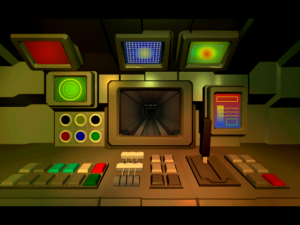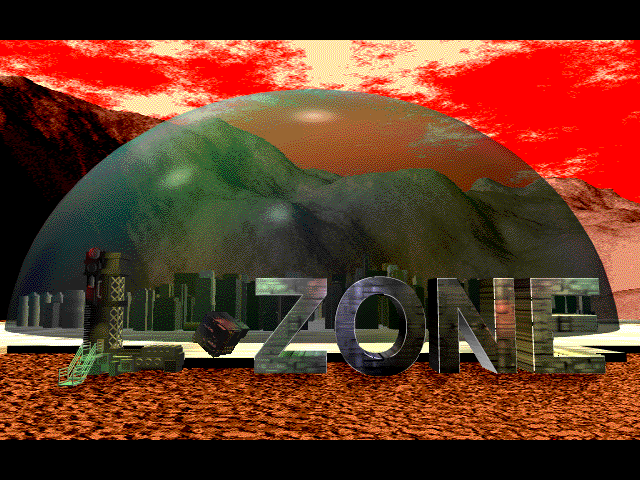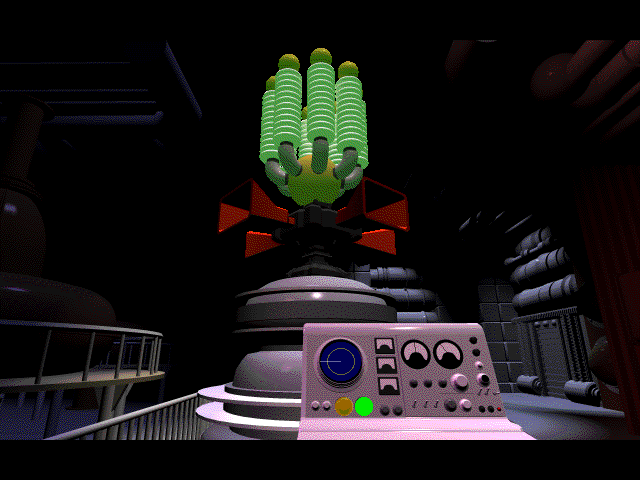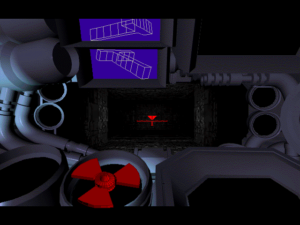L-ZONE 
There’s no dialogue in L-ZONE, or any words for that matter. To the extent that this game has a narrative, it’s incredibly vague, like an impression of a story without any specific people or places. A city on another planet. An underground lab. Colossal machines and living robots. A nefarious plan. A chance to escape.
The short journey of L-ZONE starts out on the surface of a mountainous red planet. You enter a train station, barely illuminated by a pale light. The tram whisks you away into an impossibly large industrial facility, where an unknown party has been amassing computers, engines, and robots. Did they abandon this complex years ago, or are they quietly waiting and watching from a distance? With each room, you encounter a new mystifying piece of equipment with dozens of buttons and dials that don’t have a clear function. What is all this meant for?
The game never pretends like half these weird machines have a real purpose. They must do something, surely, but only the people who built this facility would know. As far as the player is concerned, everything in this shadowy underground complex is just a big toy. Hit one of the colorful candy-shaped switches, and a monitor will flick on. Pull a lever, and a huge motor screeches to life. Plug a cable into a device, and it emits a distorted synthesizer noise.
Whatever this place is, it’s entrancing, and it invites you to fiddle with every control console you come across. But the excitement of playing with these machines goes hand-in-hand with their potential for danger. The deeper you go, the things you discover suggest that something sinister is happening here. You find models of a human brain and skeleton, and later, you encounter a robot restrained to an operating table. There’s more robots, half-functioning and buried in sand, in a room that feels like it’s supposed to be a mass grave. You see a firing range, where an endless assembly line of robots are being shot. They seem to be bleeding. Are they alive? Do they feel pain? What are those weapons being tested for?

As an early CD-ROM game, L-ZONE experiments with new presentation techniques. like using tiny screens with small, optimized videos that could load fast on a slow-speed CD-ROM drive
L-ZONE is dank and secretive, but it’s difficult to feel an emotional connection to such a vaguely drawn setting. But when there’s no words, the game fills in the gap with sound. The noise of pipes, buzzing machinery, air ducts, resonating metal – it’s almost musical. This was the second of three games designed by Haruhiko Shono, a Japanese visual artist who partnered with the publisher Synergy Inc. to direct a series of mysterious CD-ROM adventure games, but the real star here is the audio director, Norikazu Miura. The sounds add texture to the world, layers of noise and rhythm that make the dusty metal corridors feel as if something is alive underneath them, waiting to be activated.
As an experiment in non-verbal storytelling, L-ZONE is evocative, but there’s a limit to what type of story it can tell that way. It’s creating a mood, not a place with a real history. The game tries too late to introduce some form of narrative stakes – a weapon of mass destruction at the heart of the facility – and the setting and story are too broadly conceived for it to matter. Eventually, when you escape to a distant planet that the box for L-ZONE describes as “planet Green,” it’s too indistinct to carry much meaning.
Haruhiko Shono’s work has a track record for being alienating, like his third game, GADGET: Invention, Travel, & Adventure, in which an entire Eastern European nation gaslights you into joining a doomsday cult. L-ZONE keeps you at arm’s length too, though not because it’s trying to trick you or take away your agency. The world just always feel artificial, right from the title screen, where the entrance to the facility is shaped like the giant word “L-ZONE,” like the entire thing is a put-on from the very start.
This game was released early in the life of the CD-ROM format, before this type of surreal, ambient adventure game was more commonplace. Especially compared to Shono’s previous title for Synergy, the dense puzzle game Alice: An Interactive Museum, L-ZONE feels like it’s testing the waters for a game that’s entirely made out of texture, sound, and feeling.
That’s what it lands on: nothing that feels concrete or substantial, but a feeling – a dark, mysterious energy that implies that these futuristic machines can be as awesome as they are menacing.



